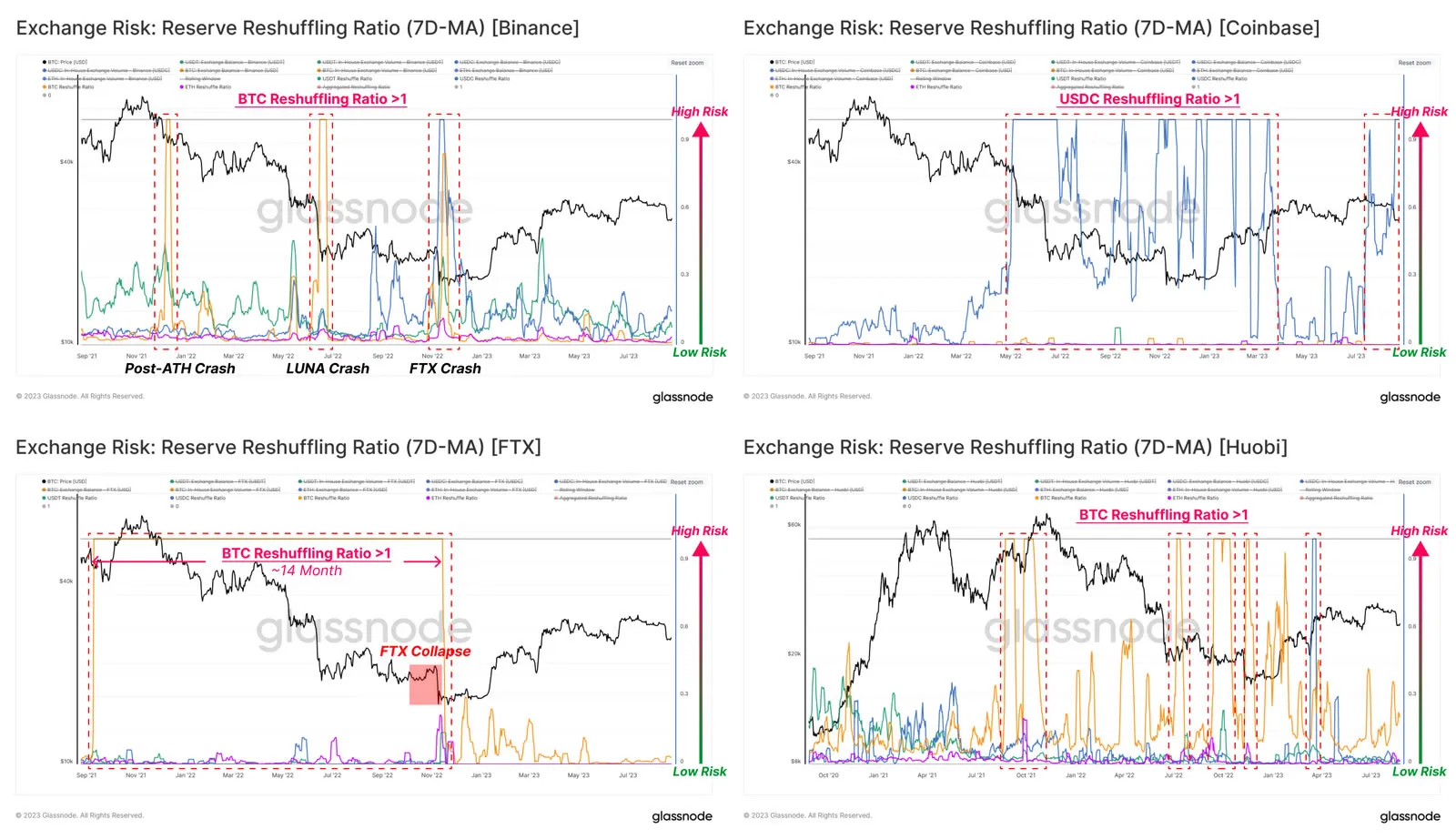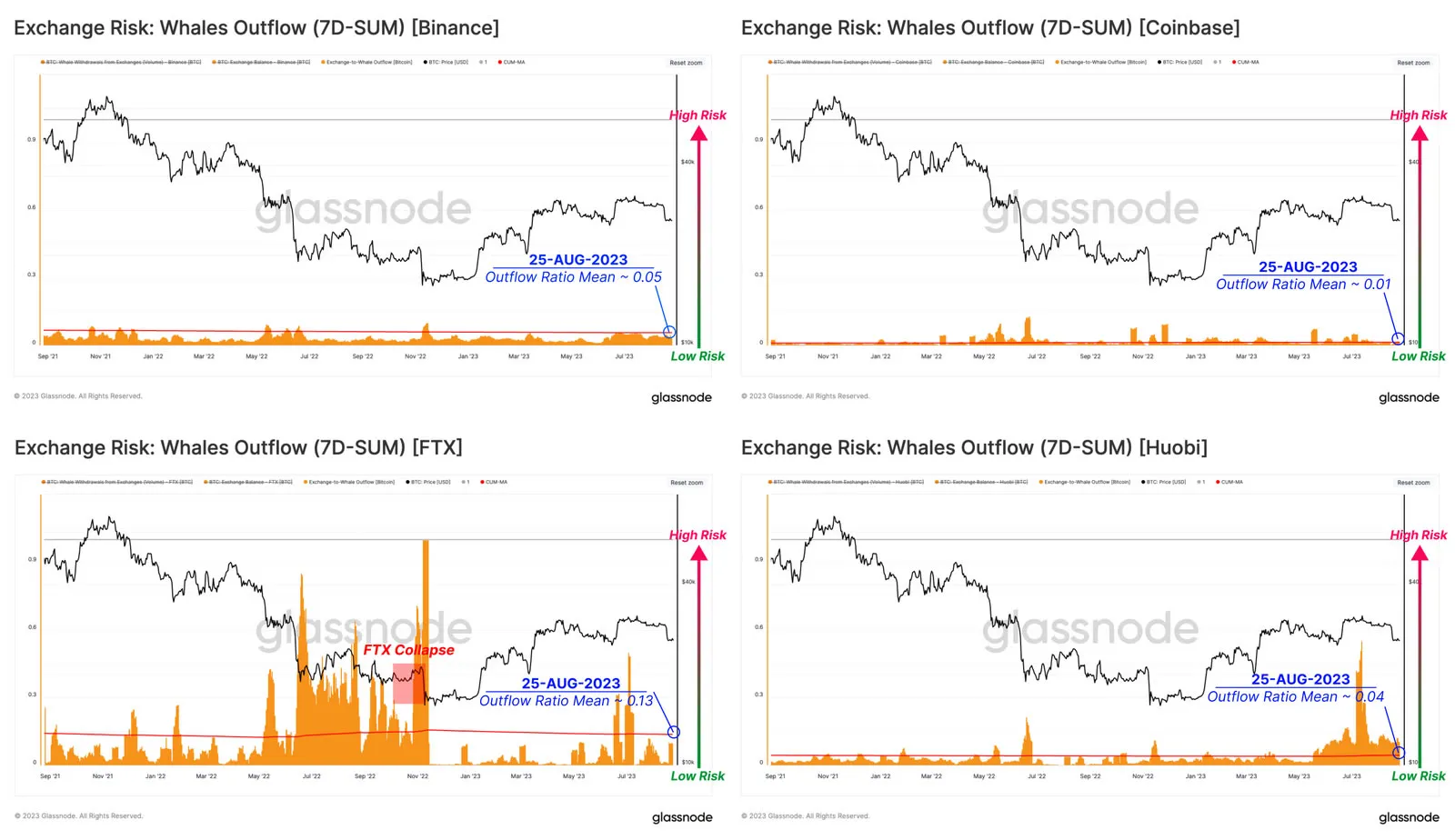The risks associated with centralized crypto exchanges were painfully exposed following the fall of FTX in November 2022. On-chain analytics provider Glassnode has developed an exchange risk framework using three indicators to identify areas of concern.
In its August 28 “week on-chain” report, Glassnode established that exchanges still have a “macro dominance” over the Bitcoin ecosystem. However, exchanges can also be a source of counter-party risk it noted.
Crypto Exchange Risks Revealed
The firm’s exchange risk framework uses the FTX data set as a reference point for high-riskinstances in the future.
It noted that the dominant three exchanges in terms of BTC supply held were Binance, Coinbase, and Bitfinex, with holdings of 691.2K BTC, 439.8K BTC, and 320.7K BTC, respectively. Furthermore, there has been a lot of commentary and FUD recently regarding BINANCE and
The ‘Internal Reshuffling Ratio’ serves as the first indicator. This ratio represents the percentage of the exchange balance transacted internally over a certain time period. The idea is to identify instances where the exchange cluster has transacted more than 100% of the exchange balance within a week.
It noted that Binance experienced reshuffling ratio spikes during periods of extreme volatility. COINBASE experienced very few fluctuations aside from USDC due to its partnership with issuer Circle.
“The reshuffling ratio of BTC signaled a high-risk status for 14 months prior to the exchange’s collapse,” it said regarding FTX.

The second indicator is an ‘Exchange Reliance Ratio.’ This is the degree to which an exchange’s balance moves to or from other exchanges, i.e., inter-exchange transfers.
Binance has a neutral or close to zero reliance ratio, meaning it doesn’t really depend upon other exchanges. It is a similar case with Coinbase. However, FTX ratios were high as investors, and Alameda pulled funds to other exchanges. Huobi also has a relatively large negative Reliance Ratio across all assets, “suggesting net transfers from Huobi to other exchanges.”
Read about Binance alternatives that you can use here
Whale Withdrawals
The third indicator is the ‘Whale Withdrawal Ratio,’ which indicates when large entities are withdrawing at elevated rates.
It explained that the metric is calculated as the ratio between total weekly whale outflows and the Bitcoin balance on the exchange.
Both Binance and Coinbase have shown a very low Whale Withdrawal Ratio over the last two years. However, whales have seen a sustained uptick in withdrawal activity relative to the Huobi BTC balance over the last few months.

Glassnode concluded that Coinbase and Binance share a relatively similar and unalarming overall on-chain footprint.
“FTX, unfortunately, stands out as a prime example of risk indicators to watch out for. For Huobi, the persistent decline in their exchange balance across the four major assets […] does suggest that a degree of caution may be warranted.”



